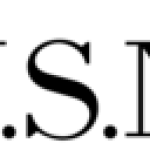- Sektör: Government
- Number of terms: 11131
- Number of blossaries: 0
- Company Profile:
An excavated, underground facility that is designed, constructed, and operated for safe and secure permanent disposal of high-level radioactive waste. A geological repository uses an engineered barrier system and a portion of the site’s natural geology, hydrology, and geochemical systems to isolate the radioactivity of the waste. The Nuclear Waste Policy Act of 1982, as amended, specifies that this waste will be disposed of in a deep geologic repository, and that Yucca Mountain, NV, will be the single candidate site for such a repository. On June 3, 2008, DOE submitted a license application to the NRC seeking authorization to construct the Yucca Mountain repository. For further detail, see High-Level Waste Disposal.
Industry:Energy
The maximum amount of electric energy that a generator can produce under specific conditions, as rated by the manufacturer. Generator nameplate capacity is usually expressed in kilovolt-amperes (kVA) and kilowatts (kW), as indicated on a nameplate that is physically attached to the generator.
Industry:Energy
The maximum amount of electric energy that a generator can produce (from the mechanical energy of the turbine), adjusted for ambient conditions. Generator capacity is commonly expressed in megawatts (MW).
Industry:Energy
A radiation detection and measuring instrument. It consists of a gas-filled tube containing electrodes, between which there is an electrical voltage, but no current, flowing. When ionizing radiation passes through the tube, a short, intense pulse of current passes from the negative electrode to the positive electrode and is measured or counted. The number of pulses per second measures the intensity of the radiation field. It was named for Hans Geiger and W. Mueller, who invented it in the 1920s. It is sometimes called simply a Geiger counter or a G-M counter and is the most commonly used portable radiation instrument.
Industry:Energy
Devices used to measure, monitor, and control the thickness of sheet metal, textiles, paper napkins, newspaper, plastics, photographic film, and other products as they are manufactured. Gauges mounted in fixed locations are designed for measuring or controlling material density, flow, level, thickness, or weight. The gauges contain sealed sources that radiate through the substance being measured to a readout or controlling device. Portable gauging devices, such as moisture density gauges, are used at field locations. These gauges contain a gamma-emitting sealed source, usually cesium-137, or a sealed neutron source, usually americium-241 or beryllium.
Industry:Energy
A substance possessing perfect molecular mobility and the property of indefinite expansion, as opposed to a solid or liquid; any such fluid or mixture of fluids other than air. Normally, these formless substances completely fill the space, and take the shape of, their container.
Industry:Energy
A facility where uranium hexafluoride gas is filtered. Uranium-235 is separated from uranium-238, increasing the percentage of uranium-235 from 1 to about 3 percent. The process requires enormous amounts of electric power.
Industry:Energy
A uranium enrichment process used to prepare uranium for use in fabricating fuel for nuclear reactors by separating its isotopes (as gases) based on their slight difference in velocity. (Lighter isotopes diffuse faster through a porous membrane or vessel than do heavier isotopes. ) This process involves filtering uranium hexafluoride (UF<sub>6</sub>) gas to separate uranium-234 and uranium-235 from uranium-238, in order to increase the percentage of uranium-235 from 1 to 3 percent. The only gaseous diffusion plant in operation in the United States is in Paducah, KY. A similar plant near Piketon, OH, was closed in March 2001. Both plants are leased by the United States Enrichment Corporation (USEC) from the DOE and regulated by the NRC since March 4, 1997. For additional information, see Gaseous Diffusion and the Fact Sheet on Gaseous Diffusion.
Industry:Energy
